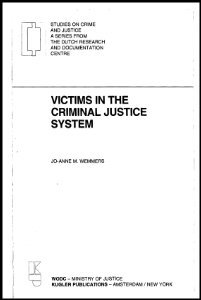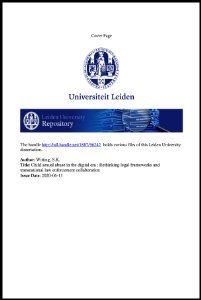Edited by J.A. Wemmers.
In the last fifteen to twenty years, criminal justice policy-makers and government in the Netherlands have begun to realize that victims of crime are often seriously affected by their experience and that reactions by criminal justice authorities are not always supportive. This realization was in part stimulated by the women's movement which drew attention to violence against women and the position of these victims in the criminal justice system. Other developments which have contributed to the increased attention for victims of crime include the rise in the registered crime rate which was at its peak during the seventies and early eighties. Also in the early seventies, the victim survey was introduced. It revealed that the registered crime statistics are incomplete and that only a fraction of crimes are brought to the attention of authorities. At the same time, police were finding it increasingly difficult to solve the crimes which were brought to their attention and the clearance rate began to drop. Authorities realized that they can only do their work if victims are prepared to report crime to them and that their willingness to report crimes is in part dependent on the quality of the relationship between citizens and the justice system.
The Hague: WODC, Ministry of Justice ; Amsterdam : Kugler Publications. 1996. 252p.







